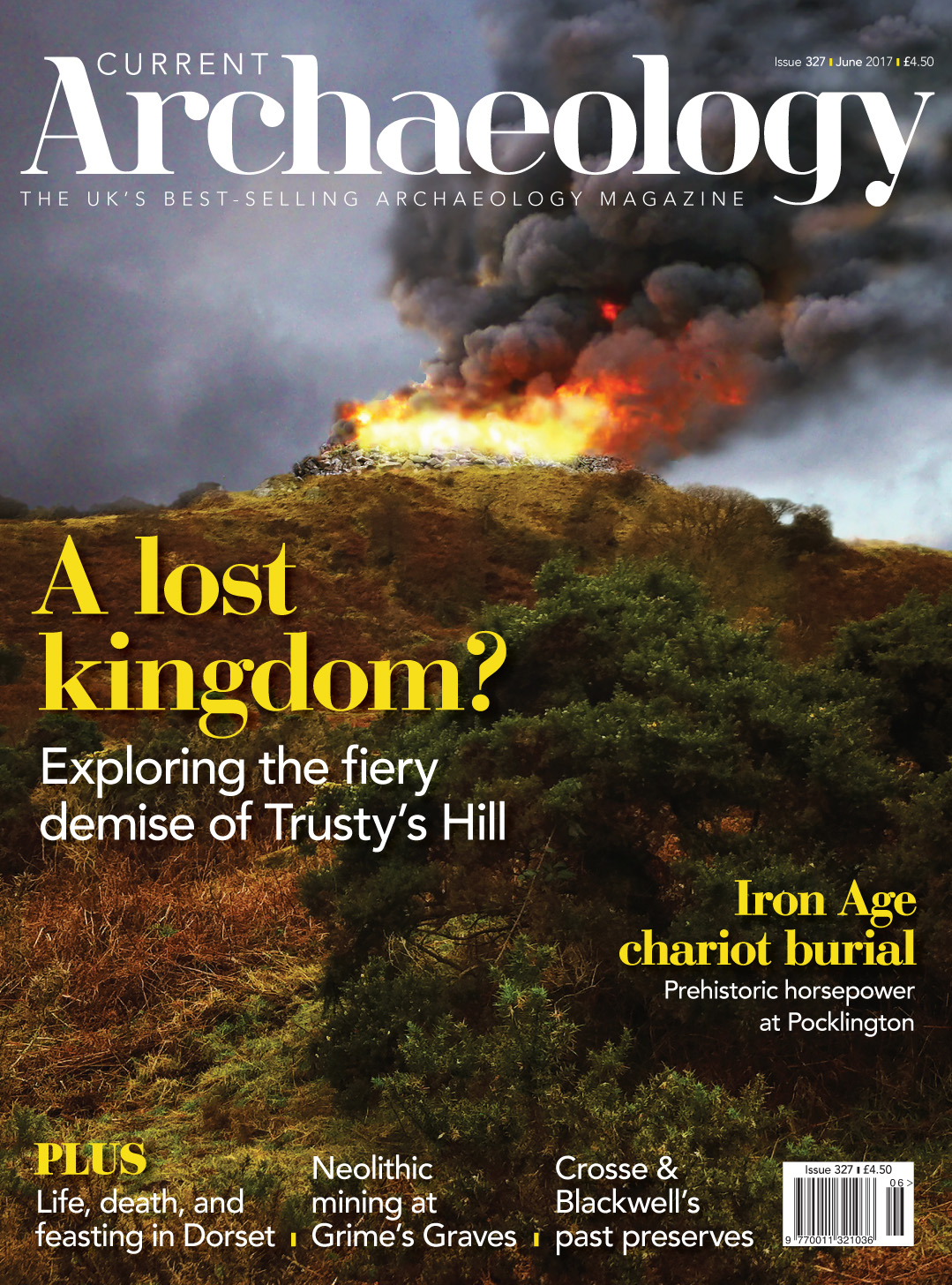Why were Pictish symbols carved into Trusty’s Hill, far to the south of where they usually occur? Investigation of a hillfort towering over the images reveals that the site developed into a prosperous centre in the 6th century AD, and may even have been at the heart of the lost kingdom of Rheged. If so, it seemingly attracted the envious eye of its neighbours in Northumbria.
Crosse & Blackwell found fame by offering customers a taste of the British Empire. The story of this company’s rise is one of celebrity chefs, new flavours from distant lands, and cutting-edge ways to prevent food from perishing prematurely. Excavation of the Crosse & Blackwell factory in London has revealed how changing tastes and technology led to its produce being shipped around the world.
The effects of international travel may also have made their mark on Pocklington, East Yorkshire. Discovery of a square-barrow cemetery has resulted in the first largescale investigation of such a site for 30 years. One of the deceased was buried with a chariot, a funerary tradition that seemingly betrays strong links with northern France.
At Worth Matravers in Dorset, the surprise finding is that activity on a hilltop overlooking the English Channel was not restricted to the Iron Age and Roman period as was once thought. Instead, it played out over 5,000 years and included some sumptuous prehistoric feasts.
Finally, Neolithic miners at Grime’s Graves showcase another side to prehistoric life. There, subterranean speculators braved hazardous conditions in search of the finest nodules of an essential raw material: flint.
Matt Symonds
IN THIS ISSUE:/n
FEATURES/n
RHEGED REDISCOVERED/n
Uncovering a lost British kingdom in Galloway
We investigate the enigmatic Pictish carvings ofTrusty’s Hill, a hillfort in Dumfries and Galloway.This artwork was found much further south than usual, raising questions about whether the carvings are even genuine. And can they be connected toa lost kingdom?
AN IRON AGE CHARIOT BURIAL/n
Excavating a square-barrow cemeteryat Pocklington
Discoveries at Pocklington, East Yorkshire, look setto transform our understanding of an Iron Age culture.We explore a cemetery with a remarkable chariotburial and unusual grave goods, and the new insightsinto burial rituals recent excavations have provided.
PAST PRESERVES/n
Excavating Crosse & Blackwell
Nearly 200 years ago, Edmund Crosse and ThomasBlackwell set up their food-manufacturing companyat Tottenham Court Road. Ahead of building a newticket hall at the station as part of the Crossrail project, archaeological excavations have beencarried out on the site, building a picture of how the firm’s premises functioned.
WHAT LIES BENEATH/n
Revealing 5,000 years of occupationat ‘Football Field’
Excavations at what was assumed to be a fairlyordinary Iron Age and Roman site in Worth Matravershave unearthed activity dating as far back as theNeolithic. We take a look at the long history of activity on a Dorset hilltop.
GOING UNDERGROUND/n
The secrets of Neolithic mining
The landscapes of sites like Grime’s Graves inNorfolk have been marked by Neolithic mining,but what went on below the cratered surface? And why did these ancient miners descend todangerous depths for flint?
NEWS/n
Dorset’s new-found Fame; Revealing Norton’s unusualRoman remains; Roman riches at Scotch Corner; MuchWenlock’s golden find; Rethinking the Uffington Horse;Archbishops emerge from Lambeth church; Reflectionson archaeology; Finds tray
REGULARS/n
Comment
Joe Flatman excavates the CA archive
Context
Laser-scanning in a Shropshire hamlet
Reviews
Dress and Society; Neanderthals in Wales;An Anglo-Saxon Cemetery at Collingbourne Ducis,Wiltshire; The People of Early Winchester; Medieval Cross Slabs of Derbyshire; Secrets of the High Woods
Museum
Jorvik Viking Centre reopens
Sherds
Chris Catling’s irreverent take onheritage issues
Last Word
Andre Selkirk on computers and CA
Odd Socs
The Académie Internationale de la Pipe (AIP)

